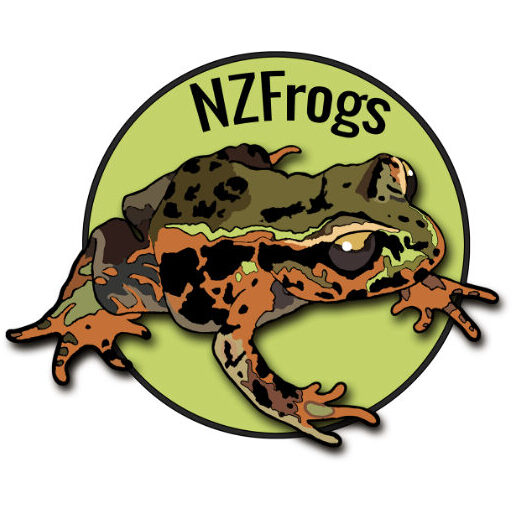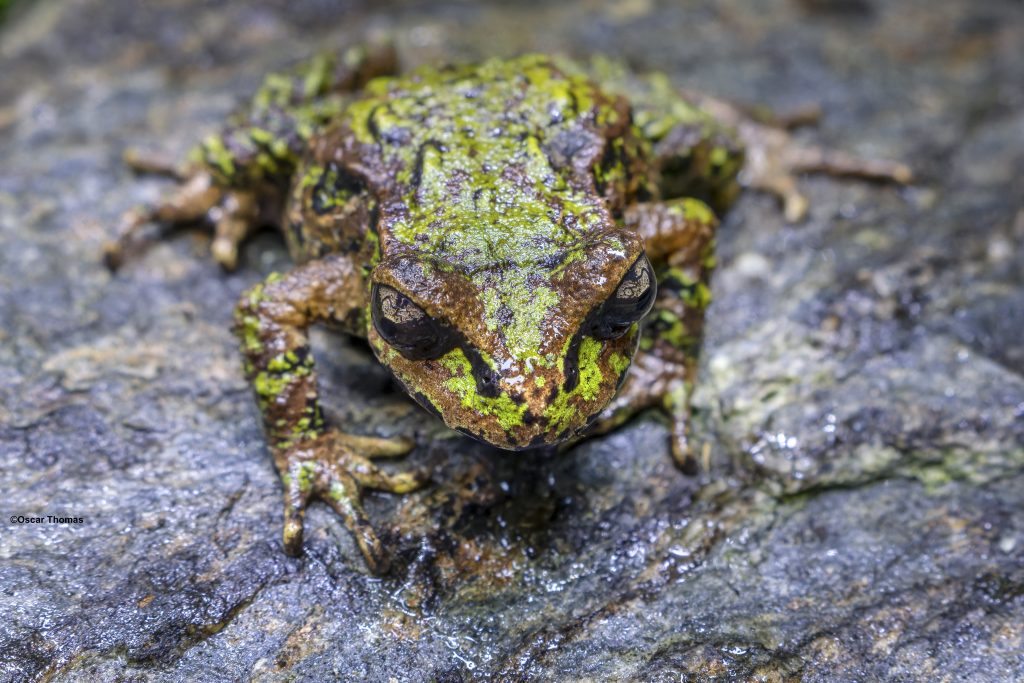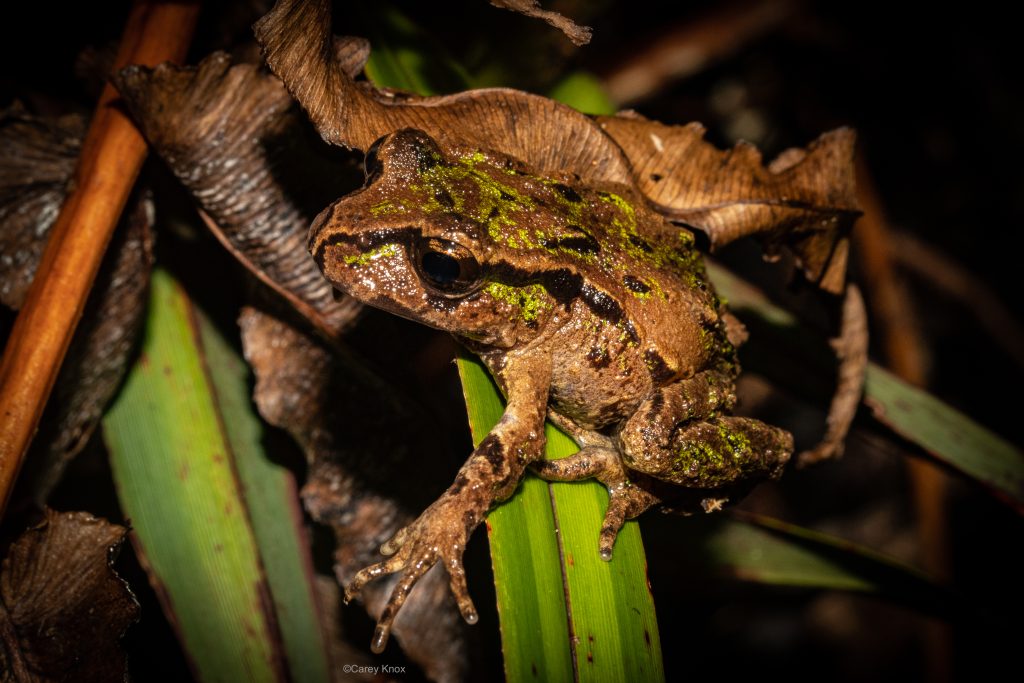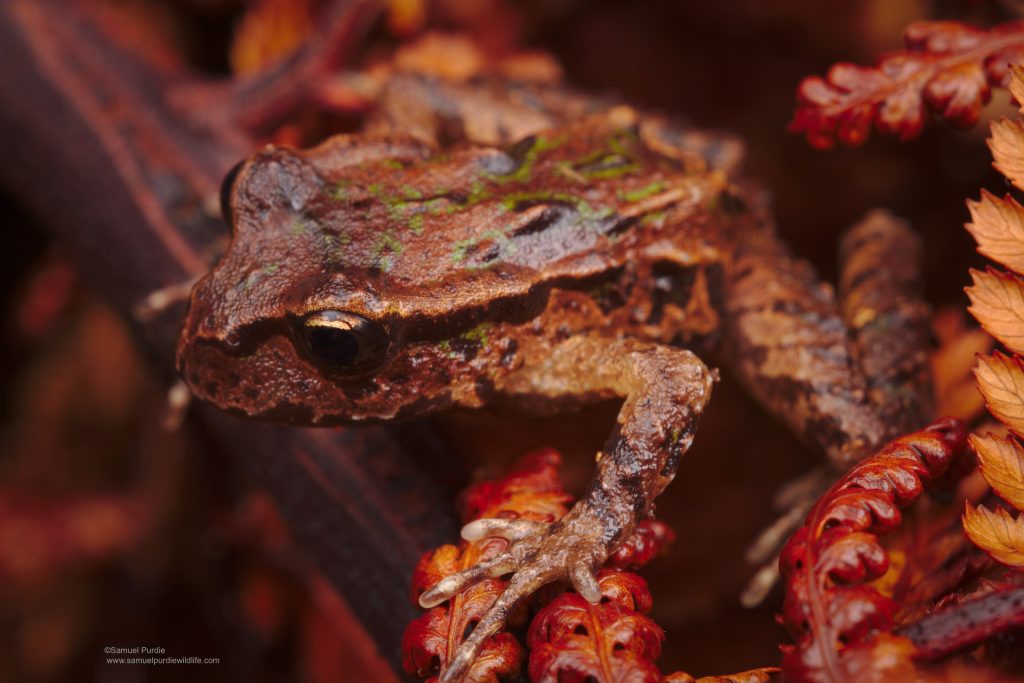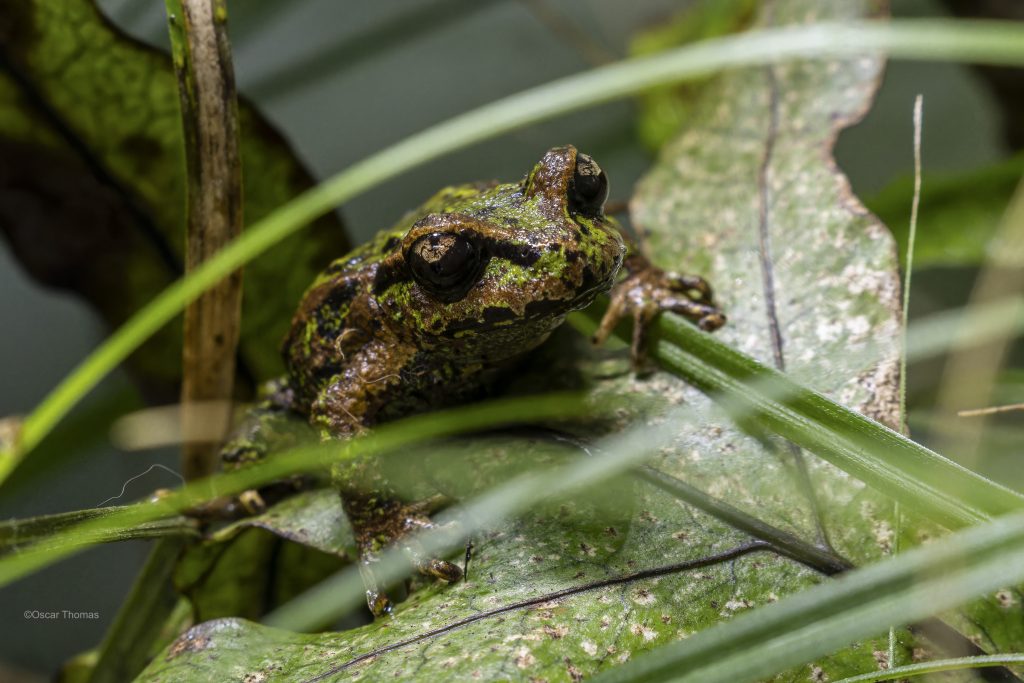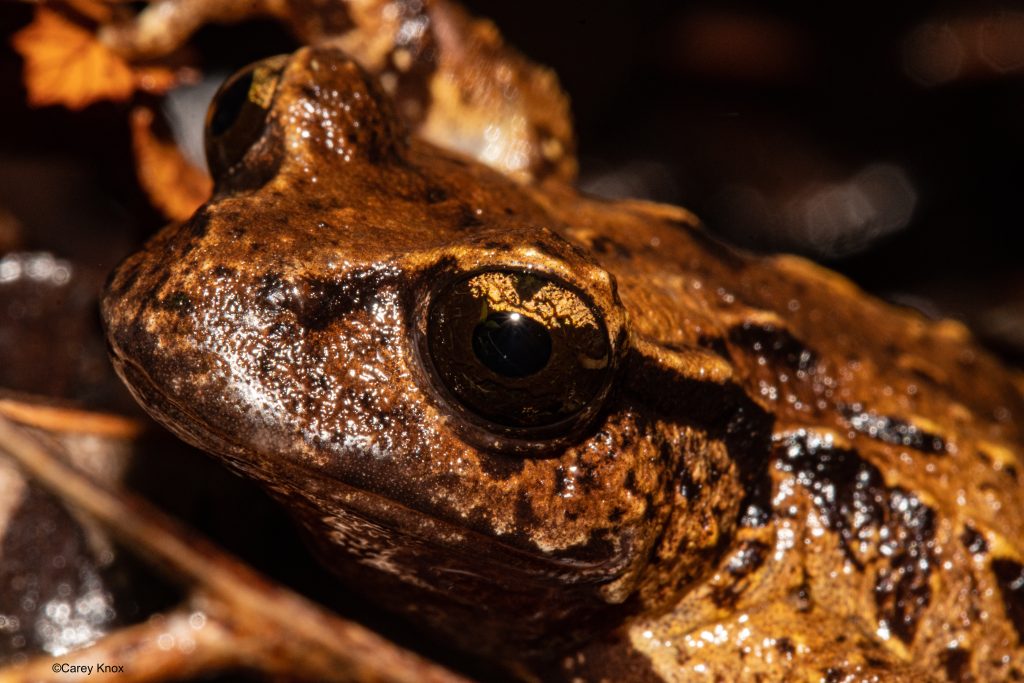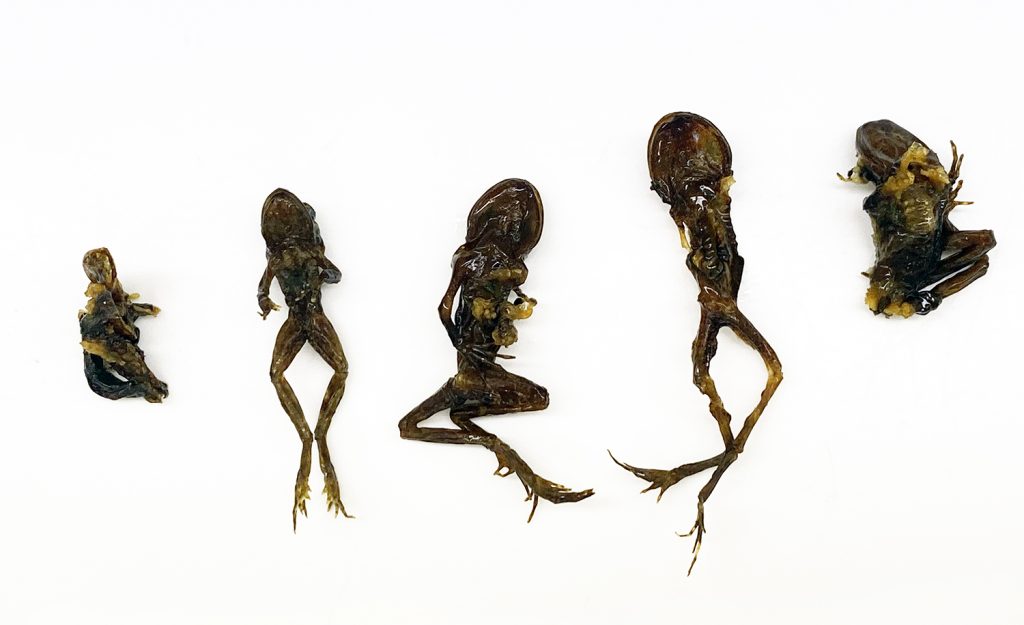Threat status
2017 NZ Conservation Status: At Risk – Declining
2015 IUCN Red list of Threatened Species: Critically Endangered
Description
The nocturnal Archey’s frog (Leiopelma archeyi) is the smallest of the three native species of frog found in New Zealand. Archey’s frogs vary in vivid shades of green and brown, each with unique blotch and speckle patterning, and often have dark bands visible on their limbs. These patterns help them effortlessly camouflage in New Zealand native forest.
Their colouration and patterns change as they age and some frogs may even display a bluish tinge, though this is very rare. Archey’s frogs have a dark lumpy glandular ridge line which runs backwards from the tip of their snout (nose) and up over their eye. Archey’s frogs, like all Leiopelma frogs, have no tympanum (eardrum) and do not croak, as is expected of a “typical” frog. As a terrestrial species, they also lack webbing on both the front and back feet. Archey’s frogs are monomorphic (i.e. both males and females look alike) and therefore very difficult to sex these frogs in the field.
How big are these frogs?
Frog body size is generally measured as snout to vent length (SVL). SVL is the distance from their snout (tip of their nose) to their vent (bottom). Male Archey’s frogs are the smaller of the two sexes with a SVL <30 mm, females can be slightly larger with SVL<40 mm.
Habitat
Archey’s frogs are a terrestrial species which generally inhabit native forest, away from streams or creeks. They are restricted to three regions in the North Island of New Zealand. Archey’s frog occurs widely in the Coromandel Peninsula and in the Whareorino Conservation Area, west of Te Kuiti. In these areas, Archey’s frog occurs sympatrically (together) with Hochstetter’s frog (Leiopelma hochstetteri). Additionally, a translocated population exists in Pureora Forest Park. Archey’s frogs prefer to live at a relatively high altitude, about 400-1000 m above sea level, in moist native forest. They are nocturnal but may emerge on particularly damp days. Most often their days are spent hidden under stones, tree roots, logs or in ponga trees in the forest.
Breeding
Archey’s frog is a terrestrial breeder, a small clutch of eggs is laid in moist sites under stones or logs and occasionally in the crown of Ponga. They exhibit parental care and males brood the eggs until hatching for 8-9 weeks. Tailed froglets hatch directly from the eggs and remain on their father’s back for 5-6 weeks until metamorphosis is complete.
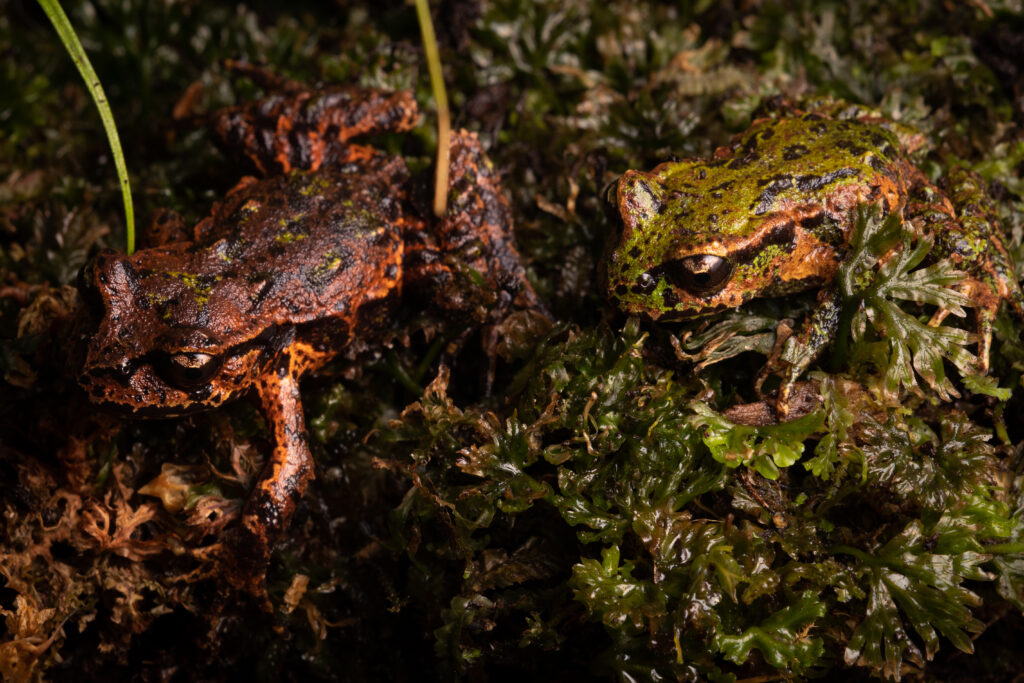
Image by Phil Bishop
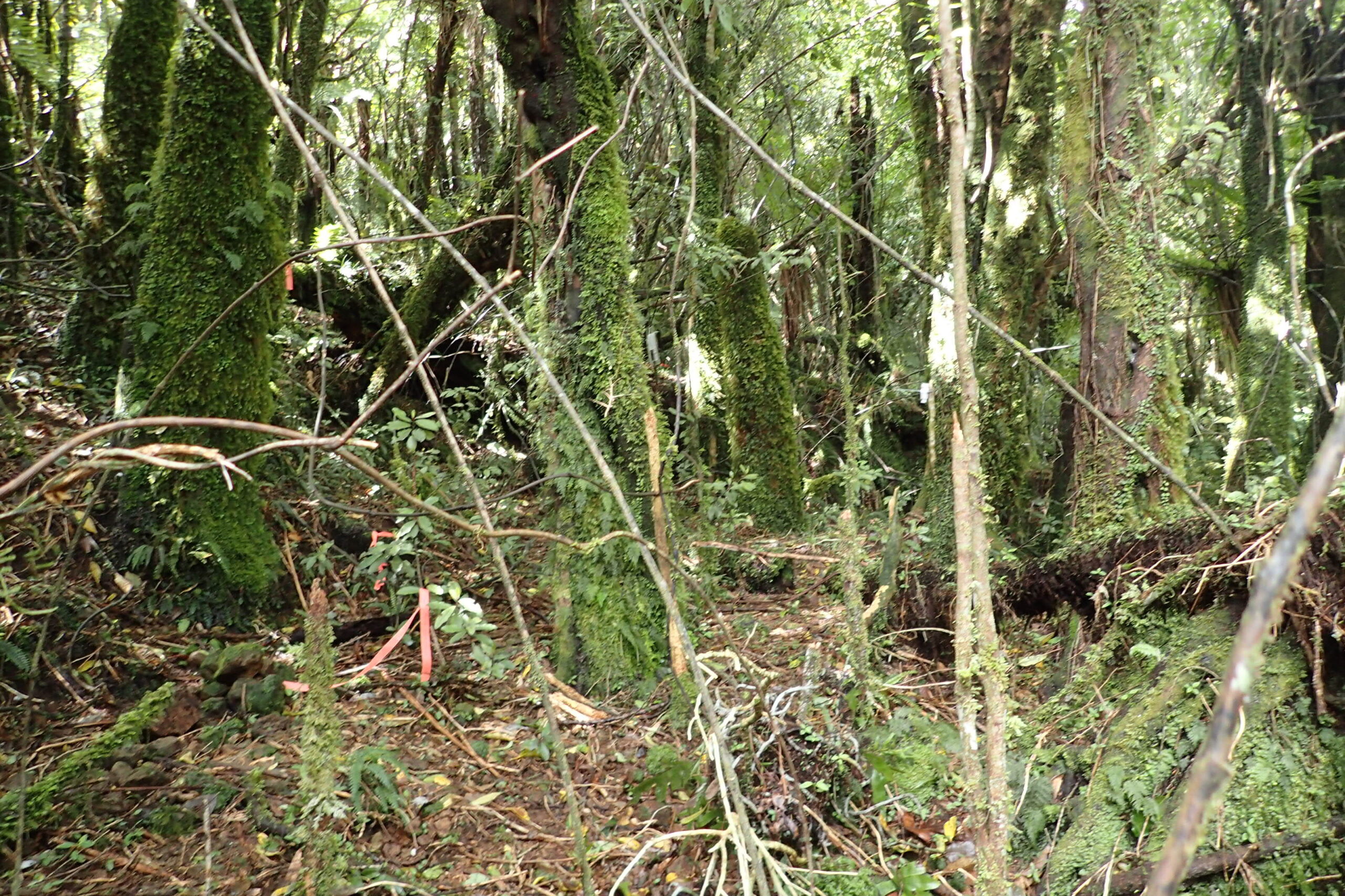
Image by Javiera Cisternas
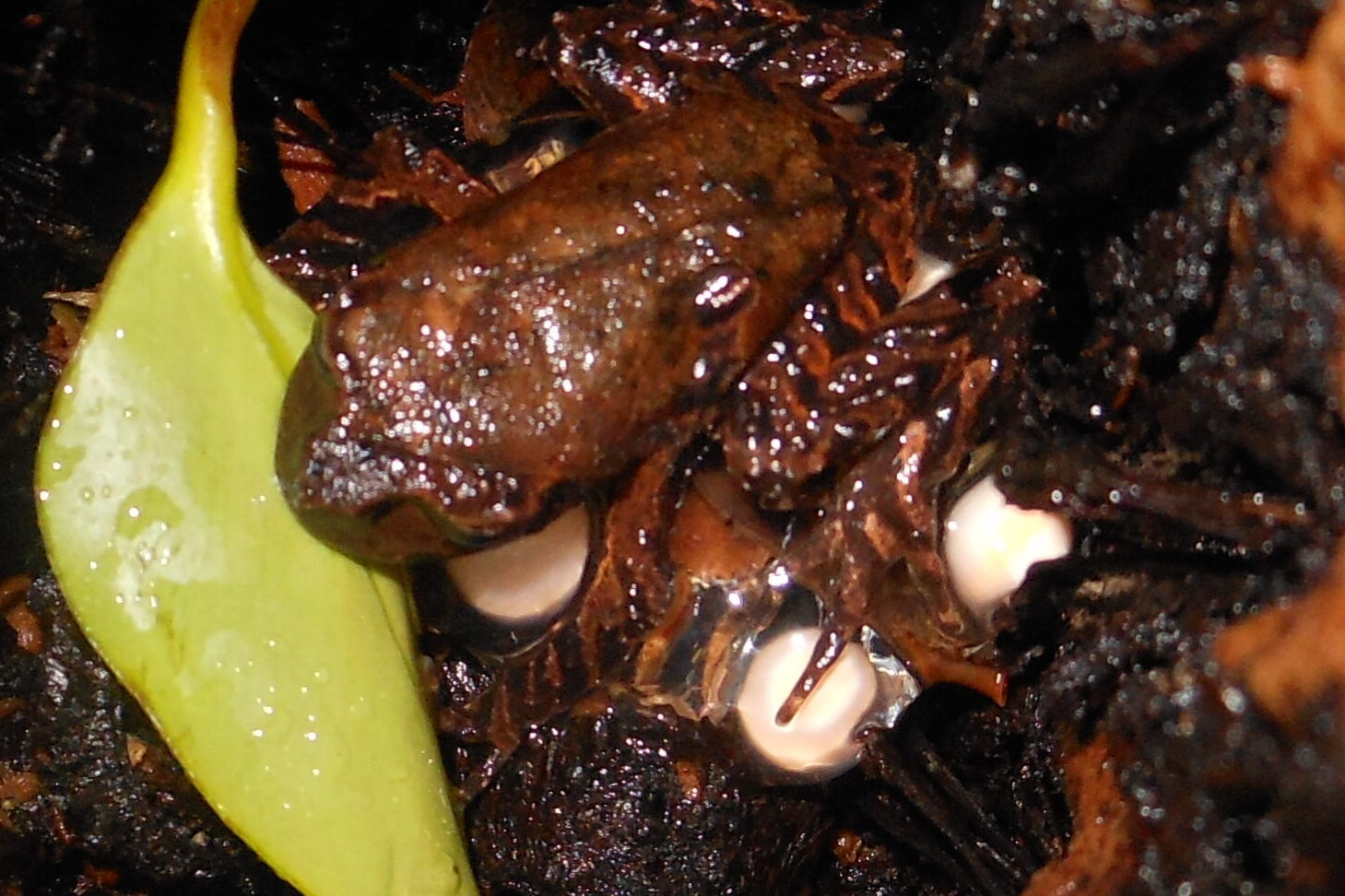
Image by Patricia Ramierez
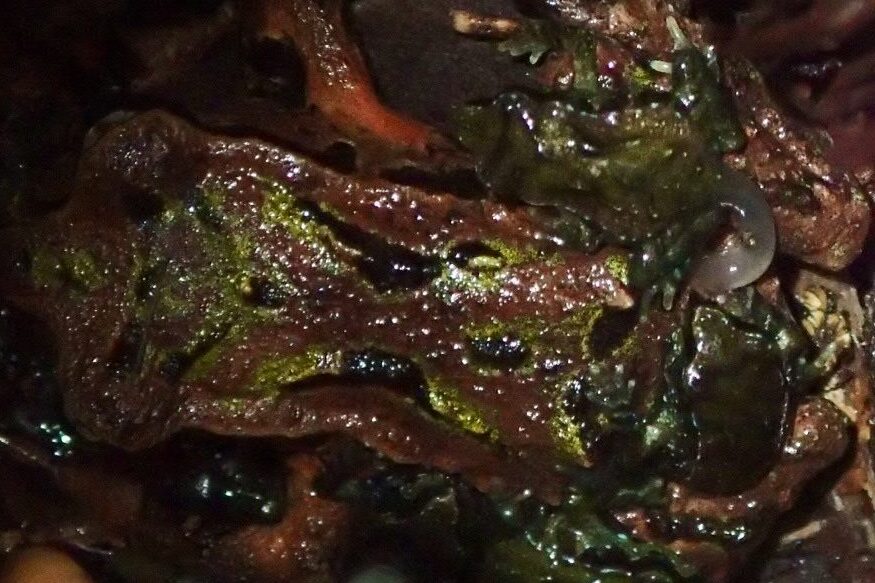
Image by Patricia Ramierez
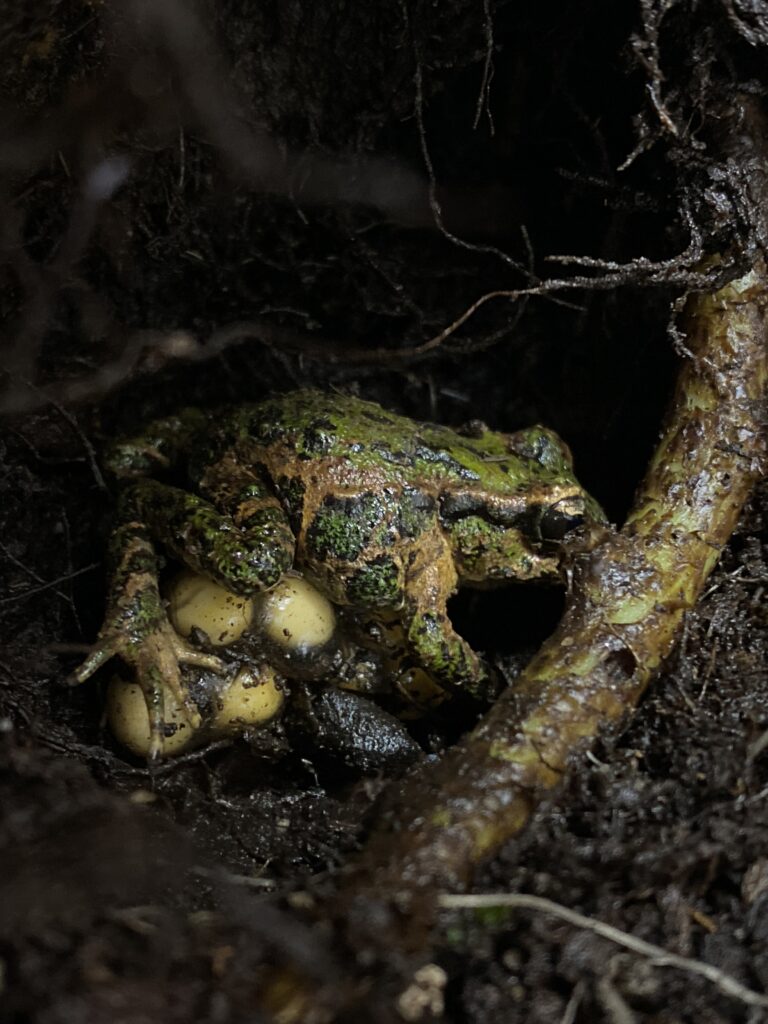
Image by Phil Bishop
Threats
Introduced Predators
Introduced mammalian predators are a significant threat to all New Zealand native frogs. Rats cause significant destruction. Dead Archey’s Frogs have been found in the Whareorino Forest with rat incisor (teeth) marks confirming that rats predate these frogs, as well as mice.
Feral pigs are thought to severely impact Archey’s frog populations as their remains have been found in the stomachs of feral pigs. It is thought that wild pigs purposefully predate on Archey’s frog due to the number of frogs found in the pigs stomach contents.
Disease
Coromandel populations of this species crashed in recent years with monitored populations decreasing by 88% over the 1996-2001 period. Several factors, including the severity and rapidity of the population crash, the geographic spread of the decline (from South to North), and the discovery of frogs with chytridiomycosis (caused by Batrachochytrium dendrobatidis), all pointed to disease being the major cause of the decline. Since then no similar declines have been reported and research has suggested that Archey’s frogs potentially have innate or acquired immunity to chytridiomycosis. Chytrid fungus likely poses a low risk to Archey’s frog.
Habitat disturbance
Archey’s frogs like all the living species are impacted by habitat disturbance. Archey’s frogs prefer mature native forest with a high diversity of plant life because they require specific temperature and humidity ranges to survive. Mining can remove mature forest, reducing the habitat quality for Archey’s frog.
Captive Populations
There is a captive population of Archey’s frogs at Auckland Zoo. These frogs are are held for captive husbandry development and research. They are not conservation insurance/recovery breeding populations. But the team at Auckland Zoo have developed husbandry practices that support breeding and the frogs have now bred successfully a number of times since 2012.
Fossil record
The sub-fossil record for Archey’s frog is poor. The two remaining natural populations and the existence of subfossils from Northland and Hawkes Bay suggest the mainland range of this species was once more widespread.
References
Baber M, et al,. (2006) Discovery and spatial assessment of a Hochstetter’s frog (Leiopelma hochstetteri) population found in Maungatautari Scenic Reserve, New Zealand, New Zealand Journal of Zoology, 33:2, 147-156
Bell BD. (1978). Observations on the Ecology and Reproduction of the New Zealand Leiopelmid Frogs. Herpetologica. 34(4):340–354.
Bell BD. (1994). A review of the status of New Zealand Leiopelma species (Anura: Leiopelmatidae), including a summary of demographic studies in Coromandel and on Maud Island. New Zealand Journal of Ecology. 21(4):341-349
Bell, B. D., Carver, S., Mitchell, N. J., & Pledger, S. (2004). The recent decline of a New Zealand endemic: how and why did populations of Archey’s frog Leiopelma archeyi crash over 1996–2001?. Biological Conservation, 120(2), 189-199.
Bishop, P. J., Speare, R., Poulter, R., Butler, M., Speare, B. J., Hyatt, A., … & Haigh, A. (2009). Elimination of the amphibian chytrid fungus Batrachochytrium dendrobatidis by Archey’s frog Leiopelma archeyi. Diseases of Aquatic Organisms, 84(1), 9-15.
Bishop, P. J., Daglish, L. A., Haigh, A., Marshall, L. J., Tocher, M., & McKenzie, K. L. (2013). Native frog (Leiopelma spp.) recovery plan, 2013-2018. Wellington: Publishing Team, Department of Conservation.
Burns RJ, et al,. (2018). Conservation status of New Zealand amphibians, 2017. Wellington: Publishing Team, Department of Conservation.
Cree A. (1989). Relationship between Environmental Conditions and Nocturnal Activity of the Terrestrial Frog, Leiopelma archeyi. Journal of Herpetology. 23(1):61–68.
Easton, L. (2018). Taxonomy and genetic management of New Zealand’s Leiopelma frogs (Doctoral dissertation, University of Otago).
Egeter B, et al,. (2019). Using molecular diet analysis to inform invasive species management: A case study of introduced rats consuming endemic New Zealand frogs. Ecology and Evolution, 9(9), 5032-5048
